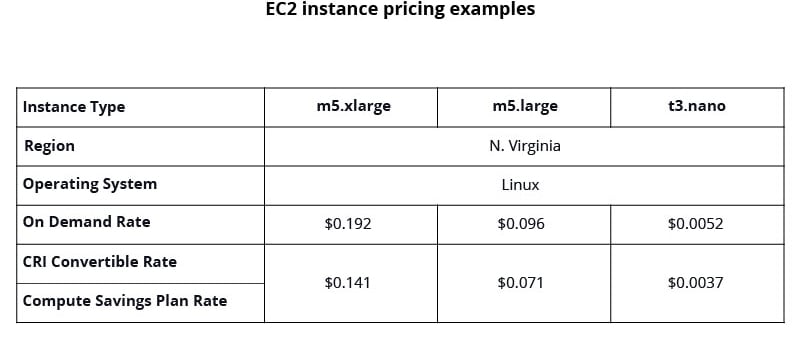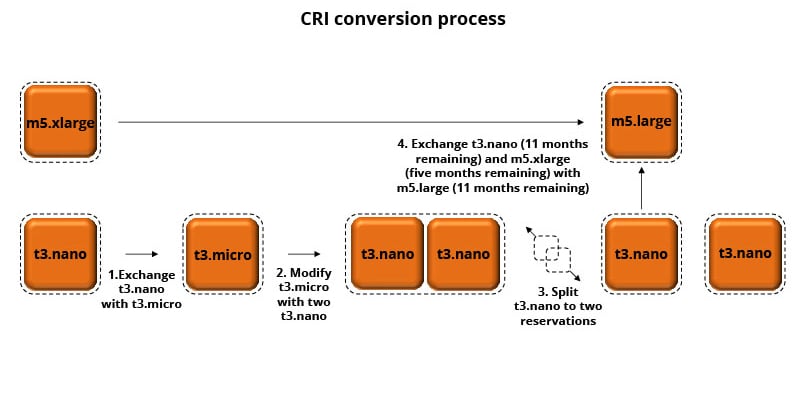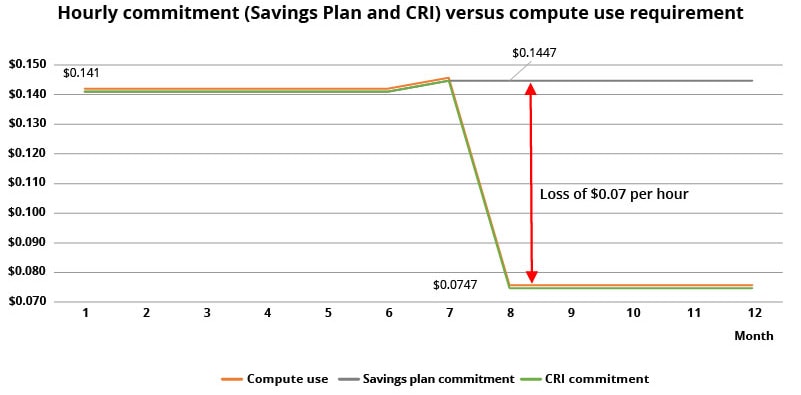Maximizing AWS compute savings while minimizing risk – Deloitte On Cloud Blog | Deloitte US has been saved
A blog post by Samuel Chan, manager, Cloud Engineering, Deloitte Consulting LLP
Organizations using Amazon Web Services (AWS) often debate when choosing Savings Plans or Reserved Instances to optimize EC2 compute spend. While Savings Plans are flexible to use, RIs are powerful, with the exchange features.
Aside from dedicated hosts, there are four pricing models for EC2 compute: On-Demand, Reserved Instance (RI), Savings Plan, or Spot. RIs and Savings Plans are the primary options for choosing the best optimization lever that does not require architectural changes. Most EC2 compute can be covered by Standard RIs, with their flexibility of sell; Convertible RIs (CRI), with their flexibility to modify and exchange; and/or Savings Plans, with their flexibility of usage. Spot Instance is often the preferred choice for nonproduction workload wherever your applications can allow a small window of interruption. For example, Spot Instance is likely not an option for SAP. On-Demand is gradually used for the remaining EC2 compute usage after RIs and Savings Plans have effectively covered 95% to 98%1 of total EC2 compute usage.
What are the powerful exchange features for CRIs?
During workload changes in terms of quantity (how many servers to run) and usage type (what type of servers to run), you can exchange CRIs to match the actual usage. A CRI can be exchanged with a different configuration if the new CRI is of an equal or higher value than the original CRI. This is an add-on feature to AWS Savings Plans. Savings Plans are flexible to use and automatically provide some flexibilities, but underutilized Savings Plans cannot be further exchanged, while CRI has further flexibility, such as reducing hourly commitment by extending the CRI term.
Scenario: Let’s oversimplify for numbers purposes and look at two approaches. Let’s hypothetically assume you have one EC2 instance (m5.xlarge) to start with. Six months pass, and then you need to add a t3.nano. Another month passes, and instance m5.xlarge needs to be rightsized to m5.large due to overprovisioning.
Approach 1: Savings Plans
Initially, you start by committing to a $0.141-per-hour Compute Savings Plan. Six months pass, and you purchase a second Savings Plan at $0.0037 per hour. Another month passes, and the demand for a new Savings Plan is $0.0747 ($0.071 + $0.0037), while the commitment is now at $0.1447 ($0.141 + $0.0037), causing a loss of $0.07 per hour due to prior commitment. Imagine you have 1,000 instances; your annual loss of saving opportunity could be more than $600K.
Approach 2: Reserved Instances
Instead of committing to a Compute Savings Plan, you can purchase CRIs. You purchase an m5.xlarge CRI at $0.141. Six months pass, and you purchase a second CRI with t3.nano at $0.0037. In month seven, you exchange your t3.nano CRI for a t3.micro CRI and then modify it to two t3.nano CRIs. One of your t3.nano CRIs will continue to cover t3.nano. The second t3.nano CRI (expiring in 11 months), along with the m5.xlarge CRI (expiring in five months), will exchange with one m5.large CRI (expiring in 11 months). In this case, there is no hourly overcommitment. AWS allows this because the target CRI value (m5.large for 11 months) is greater than the original CRIs (t3.nano for 11 months + m5.xlarge for five months).
Line of distinction between Standard and Convertible RI
Most organizations change instance configurations for business and application reasons. What deters them is their inability to commit for a mandatory period of one to three years and foresee using the same compute resources over the term.
In this situation, purchasing a standard RI has trade-offs with little or no scope to exchange it with a different instance type while it has ~5% additional discounts; a convertible RI offers a lot of flexibility to exchange the existing instance type with a new instance type of an equal or higher value than the original convertible RI.
What happens if you want to downsize instances or migrate from older generation to modern generation, such as migrating from m4.large to m5.large, where m5.large is 4% cheaper than m4.large? Savings Plans provide the flexibility to continue cover m5.large, but you will effectively continue to pay the m4.large rate because the Savings Plan commitment was purchased at the m4.large rate. With a CRI, it is possible to:
- Downsize RIs by exchanging it to support the application; hence, you pay for what you need; and
- Upgrade an RI to a new instance when AWS releases newer generations of instances.
Bottom line
Since many organizations moving to the cloud are in a state of flux, the need for financial investment flexibility in the cloud is the cornerstone of most decisions. CRIs provide a great solution. This financial instrument offers maximum usage at minimal loss and is a strong tool for organizations that are unsure of their future cloud needs.
1 Reservation coverage rates are based on Deloitte Cloud Managed Services.
Get in touch

David Linthicum
As the chief cloud strategy officer for Deloitte Consulting LLP, David is responsible for building innovative technologies that help clients operate more efficiently while delivering strategies that enable them to disrupt their markets. David is widely respected as a visionary in cloud computing—he was recently named the number one cloud influencer in a report by Apollo Research. For more than 20 years, he has inspired corporations and start-ups to innovate and use resources more productively. As the author of more than 13 books and 5,000 articles, David’s thought leadership has appeared in InfoWorld, Wall Street Journal, Forbes, NPR, Gigaom, and Lynda.com. Prior to joining Deloitte, David served as senior vice president at Cloud Technology Partners, where he grew the practice into a major force in the cloud computing market. Previously, he led Blue Mountain Labs, helping organizations find value in cloud and other emerging technologies. He is a graduate of George Mason University.




